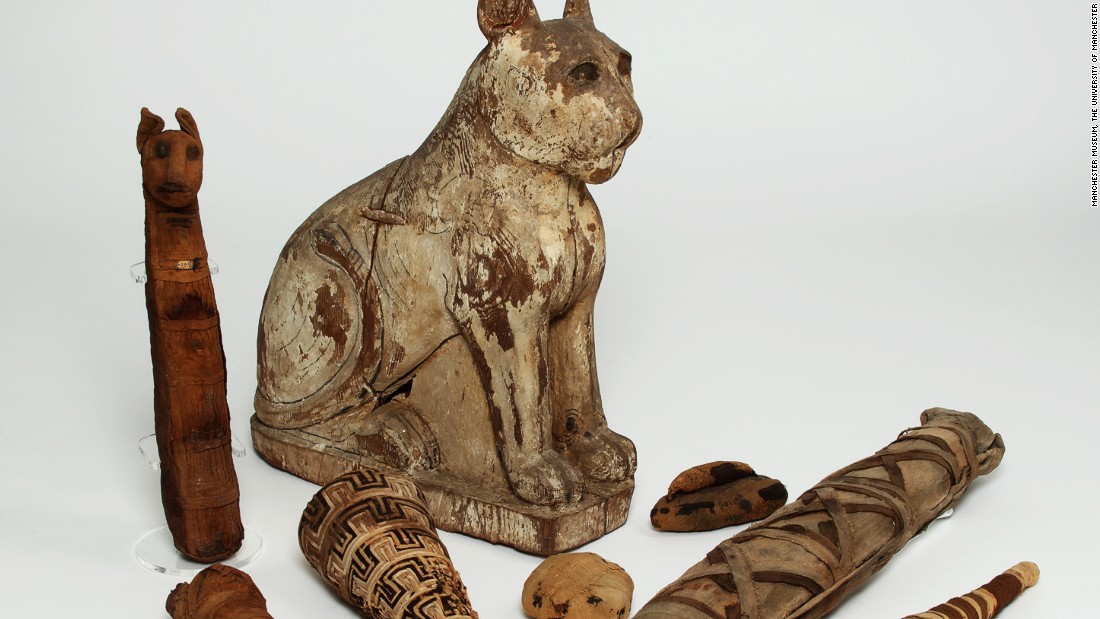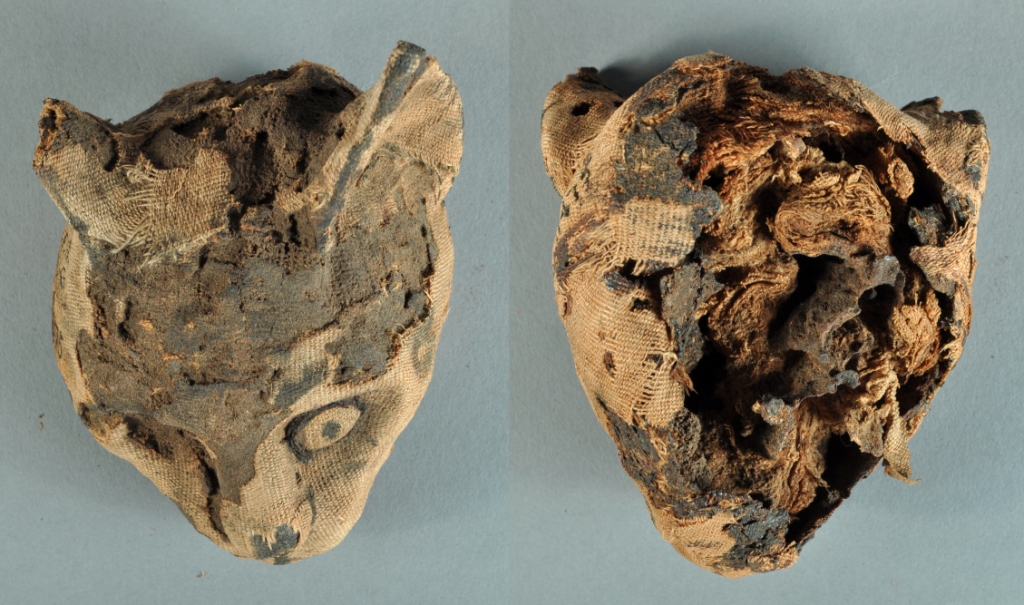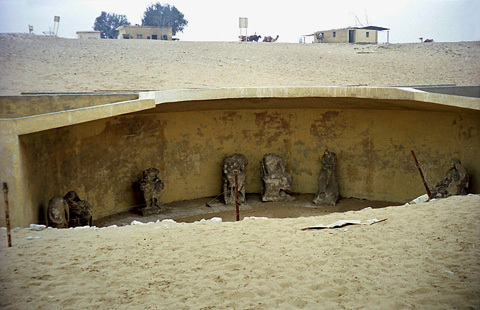Monuments Sight Seeing Attractions Egypt Saqqara Animal Cemeteries
Monuments Sight Seeing Attractions Egypt Saqqara Animal Cemeteries Animal cults were common throughout ancient Egyptian history, but they became most popular towards the Late and Graeco-Roman Periods.
Probably the most important animal burials were those of the bull cults – the ‘Apis Bulls’ of Memphis, the ‘Mnervis Bulls’ of Heliopolis and the ‘Buchis Bulls’ of Armant in Upper Egypt. Ceremonies surrounding the bull cults are vague, but it is clear that bulls were worshipped from a very early time – probably in relation to the solar cults.

Many other animals were mummified, occasionally as beloved pets, sometimes as food offerings to the deceased, but primarily for religious purposes and dedicated to specific gods.
Other animal cemeteries known to have existed at Saqqara include cats (connected with Bastet), dogs or jackals (connected with Anubis) and baboons (connected with Thoth).
The Serapeum
The Serapeum is the name given to the galleries of tombs of the ‘Apis Bulls’, situated to the north-west of Djoser’s Step Pyramid at Saqqara. Apis was a god originally associated with fertility, known as early as Dynasty I, and later connected with the god Ptah.
The Apis bulls were a succession of individual animals carefully selected by priests and had the role of serving as a physical manifestation of Ptah, whose principal sanctuary was at Memphis. The bull was chosen for its markings and for its divine birth.

According to the Greek historian Herodotus, the Apis was conceived from a bolt of lightning and it should be black in color with a white diamond on the forehead, the image of a vulture on its back, double hairs on its legs and a scarab-shaped mark under its tongue.
Paintings on coffins of the Late Period show the Apis as pied rather than black, which may have made such an animal easier to find.
Its mother was revered as a manifestation of the Goddess Isis.
At the death of each Apis, the animal was embalmed on the huge stone tables at Memphis and buried in the Saqqara catacombs with great ceremony.
The mother and calves were also buried in special separate galleries of tombs.
The bulls were treated like royalty both during their lifetime (around 20 to 25 years) and in their funerary ceremonies.
They were embalmed in the position of a sphinx, in a seated pose with their legs tucked beneath them.
From Dynasty XXVI, massive granite sarcophagi were used, but the only one found to have been inscribed from this period belongs to the reign of Amasis (Khnemibre).
Evidence of the first Apis burial in the Memphite Serapeum at Saqqara dates back to Amenhotep III of Dynasty XVIII, when many animal deities were prominent.
The earliest intact burial to be found was from the reign of Horemheb, which also saw the first decorated Apis tomb.
At this time the tomb of each bull was separate and only became part of the catacombs during the reign of Rameses II.
Rameses’ son Khaemwaset, buried several Apis bulls in his role as High Priest of Ptah at Memphis.
It was once thought that Khaemwaset who was something of an antiquarian, was also buried in the Serapeum in a wooden coffin, but Egyptologists now believe the burial to have been that of an Apis Bull.
Prince Khaemwaset donated several items of jewellery and shabtis inscribed in his name to the bull burials.
Merenptah, another son of Rameses II, is also seen officiating in the Apis ceremonies as both High Priest and Prince.
The catacombs continued in use at least until the Ptolemaic Period, while the cult of the Apis survived until the Emperor Honorius banned it and closed the Serapeum in AD 398.
Although there had been much archaeological material found earlier in the area, the Serapeum was first discovered by a Frenchman, Paul Lucas, in the 18th century.
In 1851 Auguste Mariette found a lion-bodied sphinx with the head of a king, part of an ancient processional route described by the Greek geographer Strabo in the 1st century AD.
Strabo wrote of an avenue of sphinxes which once led through the sand dunes to a Temple of Serapis, built by Nectanebo II.
Mariette uncovered over a hundred more sphinxes during his preliminary excavations and eventually, on 12 November 1851, he entered the catacombs beneath the Serapeum temple in an explosion of great public excitement.
The underground chambers first entered by Mariette consisted of a long gallery containing niches with votive stelae and large side-chambers containing 24 huge granite sarcophagi in the form of single blocks of stone, each weighing between 60 and 80 tonnes.
This gallery proved to have contained the burials of Apis Bulls from Dynasty XXVI to the Ptolemaic Period.
There were three sarcophagi inscribed – in the names of Amasis (Dynasty XXVI), Cambyses (Dynasty XXVII) and Khebebesh, the last native ruler of Egypt before the Persian re-conquest and the advent of Alexander the Great.
All of the sarcophagi found in this gallery had been robbed in antiquity and were found to be empty.
The main gallery has provided Egyptologists with a wealth of chronological information, especially about the elusive rulers of the Third Intermediate Period.
Mariette continued excavations and in the following year found more galleries or ‘lesser vaults’ which proved to contain burials from year 30 of Rameses II down to Dynasty XXII.
In a third series of chambers, Mariette discovered burials from the reign of Amenhotep III into Dynasty XIX, the earliest yet found.
One of the chambers in the earlier gallery was found to contain an intact burial, dated to the reign of Horemheb, and in another chamber, two huge gold covered coffins containing bull burials were attributed to Years 16 and 30 of the reign of Rameses II.
A great many artefacts were found, including statues, four large human-headed canopic jars containing the viscera of the bulls and around 250 shabti figures.
Many of the artefacts found by Mariette during his excavations of the Serapeum are now in the Louvre in Paris.
Curiously the bodies of the bulls had been broken into pieces before being wrapped and coated in resin, suggesting to Egyptologists the possibility of the bulls being ritually cooked and eaten by Pharaoh and the priests before internment.
It would seem that only in later burials were the Apis Bulls fully mummified.
On entering the Serapeum a long staircase descends deep underground.
In the passage of the first hall, the sarcophagus lid of the Apis buried in the time of Amasis can be seen.
The main gallery which dates to the Late and Ptolemaic Period runs parallel to the entrance corridor and here you can see the sarcophagi of bulls buried under Amasis, Cambyses and Khebebesh in the side-chambers.
The most elaborately decorated sarcophagus stands at the far end of the long gallery. Only the later gallery can now be seen.
The Ibis Galleries
The sacred ibis (Threskiornis aethiopicus) was the most common species of the bird regarded in ancient Egypt as an incarnation of the god Thoth.
By the Late Period and Ptolemaic times, ibises were mummified in great numbers and buried in catacombs, especially at Tuna el-Gebel and Saqqara.
Perhaps Saqqara was chosen as the site of an ibis cemetery because of its associations with Imhotep (Djoser’s architect) who was identified with Thoth (or Asclepius) from the Late Period onwards.
Many votive objects have been found in the galleries, such as amulets and statuettes, produced in the shape of the ibis which were sacred to the cult of Thoth.
The mummified ibises were probably bought by pilgrims and donated as gifts to Thoth or offered by those in search of healing from the deified Imhotep.
During the 18th and 19th centuries, travellers reported seeing the ‘tombs of the bird mummies’ at Saqqara but these were virtually ignored until Walter Bryan Emery began to excavate in the area while hoping to find the tomb of Imhotep in 1964.
Emery worked in an area which was strewn with pottery sherds from a late pharaonic date and went on to discover their source while clearing the shaft of a Dynasty III mastaba tomb.
His workmen accidentally broke into catacombs similar in appearance to the Serapeum, but this time brimming with mummified ibises (estimated at over one and a half million).
It seems that the birds had been placed in the galleries in sealed pottery jars – the source of the mysterious potsherds.
Emery went on to find an extensive complex of ibis galleries running to many chambers containing rows and rows of mummified birds stacked in their pottery jars.
Over the next decade Emery also found catacombs containing burials of falcons, baboons and the galleries of the ‘Mother of the Apis’.
Emery’s excavation came to an end with his death in 1971, but has since been continued by others.
Other animal burials
To cater for the rise in popularity of animal cults at Saqqara a series of small temples or shrines were built at the northern edge of the plateau which were populated by priests and officials who maintained the cults.
A society evolved in the area which included embalmers, stonecutters, craftsmen of various kinds and no doubt those who provided food and lodging to the many pilgrims visiting the shrines.
In the Saqqara tomb of the scribe, Hor of Sebennytos, a documentary archive was found, comprised of 65 demotic texts written on pottery or osraca.
This archive, known as the ‘dream ostraca’ gave many details of the management of the animal cults during the reign of Ptolemy VI, as well as documenting the divinely inspired dreams of its author.
Most of the animal cemeteries at Saqqara, excluding the Apis galleries, were votive burials – animals and birds which were buried in mass graves.
More major caches of animal mummies were discovered during excavation of the terrace of the Nectanebo II cult temple near the Serapeum.
A cemetery of baboons consisted of two levels of galleries, once full with mummified baboons in wooden boxes, but unfortunately only one intact mummy had survived destruction by the early Christians.
There were also sacred falcons buried in a gallery beneath the temple terrace, mummified and enclosed in pottery jars similar to the ibis burials mentioned earlier.
During Emery’s excavation of the temple terrace he also found a pit containing a large number of votive statuettes dedicated to many different deities.
How to get there
The Serapeum is reached by walking west along the Avenue of Sphinxes from the ‘Philosopher’s Circle’ to the site of the Temple of Osiris-Apis (now gone) near the Saqqara resthouse.
The Apis Galleries have been closed for restoration for the last few years and I am unable to confirm whether they have been re-opened.
The Ibis Galleries are located at the northern edge of the Saqqara necropolis near the Dynasty III cemetery and about half a kilometre to the north-east of the mastaba of Ti.
At present they are not open to visitors.


